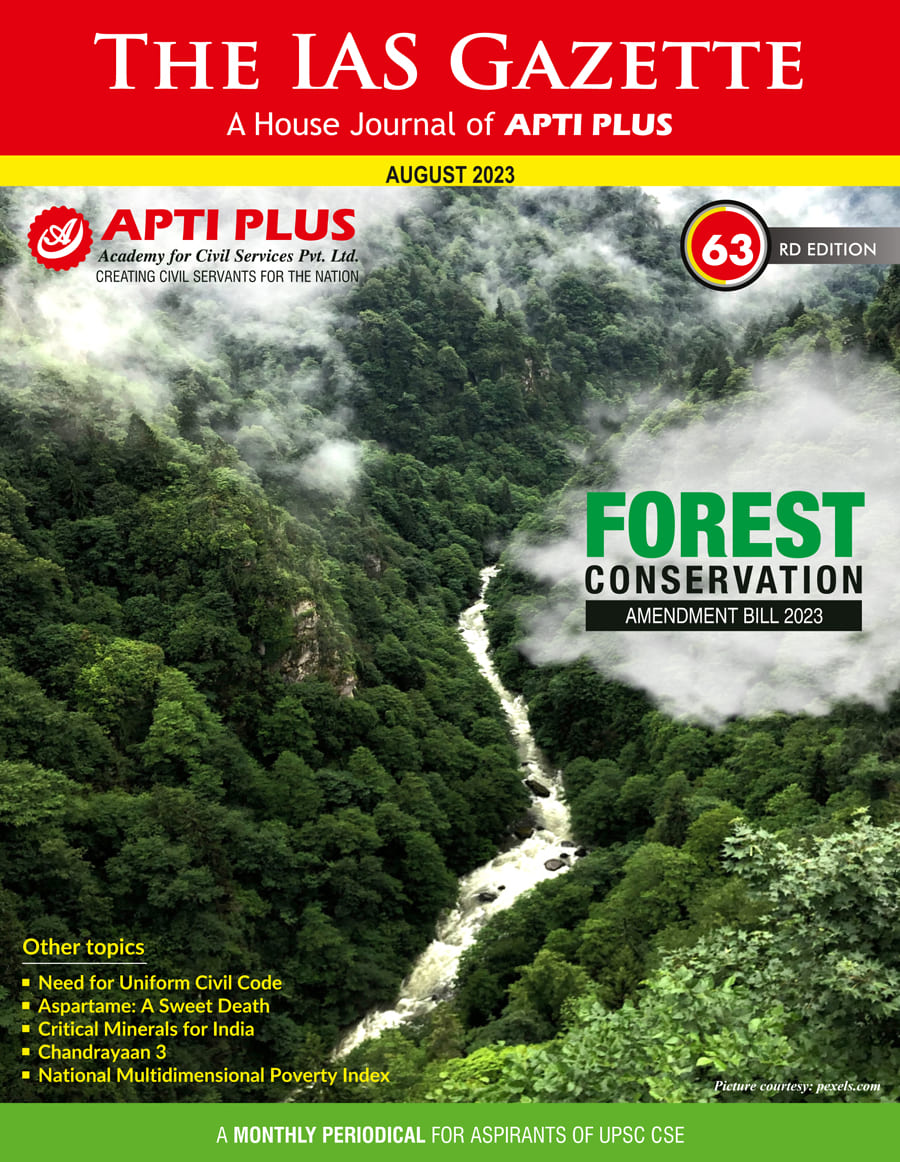Description

Copyright infringement not intended
Picture Courtesy: gstsuvidhakendra.org
Context: Illegal coal mining is a serious threat to the environment and the economy of India. To combat this menace, the government has launched the Khanan Prahari App, which allows citizens to report any suspicious activities related to coal mining in their vicinity.
Details
- The Khanan Prahari mobile app is an initiative by the Ministry of Coal to curb illegal coal mining activities through public participation.
- The app is complemented by the Coal Mine Surveillance & Management System (CMSMS) web portal.
- The CMSMS was developed in collaboration with the Bhaskaracharya Institute of Space Application & Geoinformatics, Gandhinagar, and CMPDI, Ranchi.
- The government aims to combat the threats posed by illegal coal mining to the environment, safety, traditional livelihoods, and the economy using space technology and e-governance.
Objectives
- The primary objective is to encourage public participation in reporting incidents of illegal coal mining.
- Transparency and space technology are employed to take effective actions against illegal mining.
- Public involvement is recognized as crucial in the fight against illegal coal mining.
Key Features of Khanan Prahari Mobile App:
- Reporting Incidents: Users can report incidents of illegal mining using the app. They can capture photographs and provide accompanying comments regarding the incident. The app allows geotagging of the photographs through GPS location.
- Confidentiality: User identities are kept confidential, ensuring their privacy and security.
- Complaint Tracking: Complainants receive a unique complaint number upon reporting an incident. This number enables them to easily track the status of their reported complaints within the app.
- Availability: The Khanan Prahari mobile app is available for download on two major platforms: Google Play Store for Android-based mobile phones and Apple Store for iOS-supported iPhones.

Illegal Coal Mining
About
- Illegal coal mining refers to the extraction of coal from mines or coal deposits without proper authorization, licenses, or compliance with regulatory standards set by government bodies. This activity often takes place in violation of environmental, safety, and social regulations, leading to various negative consequences.
Factors contribute to illegal coal mining
- High Demand: When there is a significant demand for coal, whether for energy production or industrial purposes, and the legal supply cannot meet this demand, it creates an opportunity for illegal coal mining. The gap between demand and supply can lead to a black market where coal is extracted and sold illegally.
- Lack of Livelihood Opportunities: In regions where employment opportunities are limited and alternative sources of income are scarce, illegal coal mining can become an attractive option for individuals seeking livelihoods. The potential for earning money through illegal mining might outweigh the risks for those without other viable options.
- Inadequate Enforcement: Weak enforcement of mining regulations, combined with corruption and lack of oversight, can embolden individuals and groups to engage in illegal coal mining. When there are few consequences for illegal activities, it encourages their continuation.
- Complex Approval Processes: Cumbersome bureaucratic procedures and complex legal requirements for obtaining mining licenses can discourage individuals and businesses from pursuing legal avenues for coal mining. This frustration with the legal process may lead some to resort to illegal mining, which is perceived as easier and more expedient.
Impacts of illegal coal mining
- Environmental Degradation: Unregulated coal mining often involves clearing land for mining operations, resulting in deforestation. The removal of vegetation and topsoil can lead to soil erosion and loss of fertility. Mining runoff can pollute water sources, affecting aquatic life and human communities downstream. Habitat destruction can disrupt ecosystems, leading to a loss of biodiversity.
- Safety Hazards: Illegal coal mining sites often lack proper safety measures and infrastructure. Miners work in hazardous conditions, using inadequate equipment, which significantly increases the risk of accidents, collapses, and other life-threatening incidents. This leads to injuries, disabilities, and even fatalities among miners.
- Economic Losses: Governments lose out on potential revenue when coal is mined and sold illegally. Legal mining operations contribute to public finances through taxes, royalties, and fees. When these revenue streams are bypassed due to illegal activities, it can negatively impact public budgets and the funding of essential services.
- Health Risks: Miners in illegal coal mining operations are exposed to a range of health hazards. The inhalation of coal dust and other particulates can lead to respiratory diseases like pneumoconiosis (black lung disease) and other lung disorders. Exposure to hazardous chemicals and poor working conditions further exacerbate health risks.
- Social Disruption: Illegal coal mining can lead to the displacement of local communities due to encroachment on their lands. Conflicts can arise between miners, communities, and authorities over land ownership, resource access, and environmental impacts. This social disruption can strain relationships and lead to instability in affected areas.
Steps Taken by India:
- Khanan Prahari Mobile App: This app serves as a powerful tool for citizens to report incidents of illegal coal mining through geo-tagged photographs and textual information. It encourages public participation in combating illegal mining by allowing users to easily document and report violations.
- CMSMS Web Portal: The Coal Mine Surveillance & Management System (CMSMS) web portal complements the mobile app. It provides a platform for centralizing and analyzing the data collected through the app. This integration of technology aids in surveillance and enforcement efforts.
- Increased Surveillance: India employs satellite technology and geo-informatics to monitor mining activities across the country. This technology allows for real-time or periodic tracking of mining operations, making it easier to detect and investigate unauthorized and illegal activities.
- Legal Reforms: To promote legal mining and reduce the complexities associated with obtaining mining approvals, the Indian government has undertaken legal reforms. Simplifying the approval processes makes it more attractive for individuals and companies to engage in legal mining operations, thereby reducing the incentive for illegal mining.
- Task Forces and Raids: Specialized task forces are established to conduct targeted raids on areas suspected of harbouring illegal mining operations. During these raids, illegal mining equipment is often seized, and legal actions are taken against those responsible. These efforts serve as a deterrent to potential illegal miners.
Challenges
- Enforcement: In many cases, illegal coal mining operations occur in remote and challenging geographical locations. Enforcing regulations and conducting surveillance in these areas can be logistically challenging and resource-intensive.
- Corruption: Corruption within law enforcement agencies can undermine efforts to control illegal mining. Bribes and kickbacks can lead to officials turning a blind eye to illegal activities or even actively supporting them.
- Community Engagement: Engaging local communities is crucial to discouraging illegal mining. Providing sustainable alternative livelihood options for communities dependent on mining can help reduce their reliance on illegal activities.
- Limited Resources: Monitoring and Law Enforcement: Insufficient resources, both in terms of personnel and technology, can hinder effective monitoring and law enforcement. Adequate funding and allocation of resources are essential for successful efforts against illegal mining.
- Political and Economic Pressures: There can be a complex balancing act between economic interests, such as revenue generation from legal mining, and environmental and social concerns. Political pressures to support economic growth can sometimes lead to leniency or delays in addressing illegal mining issues.
Way Forward
- Technology Integration: Continued use of advanced technology, such as satellite imagery and geoinformatics, can significantly improve the monitoring and surveillance of mining activities. Real-time data and analysis can enhance detection and prevention efforts, making it more difficult for illegal operations to go unnoticed.
- Strengthening Legal Frameworks: Stricter penalties for illegal mining activities can act as a deterrent, making it riskier for individuals and groups to engage in illegal mining. Streamlining approval processes for legal mining operations can make the legal route more attractive, reducing the incentive for illegal activities.
- Community Participation: Engaging local communities in decision-making processes related to mining can foster a sense of ownership and responsibility. Offering sustainable livelihood alternatives can help reduce their dependence on illegal mining and provide them with stable income sources.
- Transparency and Accountability: Implementing measures to enhance transparency in mining operations, revenue collection, and allocation of funds can help mitigate corruption. Public access to mining-related information can hold authorities and mining companies accountable for their actions.
- Awareness and Education: Raising awareness about the negative consequences of illegal mining among communities, miners, and the general public is essential. Education campaigns can inform people about the environmental, health, and economic risks associated with illegal mining, discouraging participation and garnering public support for anti-illegal mining efforts.
- International Cooperation: Collaboration with other countries facing similar challenges related to illegal mining can provide valuable insights and best practices. Sharing knowledge and experiences on enforcement, technology, and policy approaches can lead to more effective strategies.
Conclusion
- In the fight against illegal coal mining, the Khanan Prahari App emerges as a transformative solution. Through its integration of technology and public engagement, this app empowers citizens to report incidents, bolstering transparency and accountability. By combining community participation, stringent regulations, and advanced surveillance, a collaborative effort is forged to curb environmental degradation, enhance safety, and foster sustainable mining practices.
Must Read Articles:
COAL PRODUCTION IN INDIA: https://www.iasgyan.in/daily-current-affairs/coal-production-in-india
COAL INDUSTRY: https://www.iasgyan.in/daily-current-affairs/coal-industry
|
PRACTICE QUESTION
Q. What are the environmental and socio-economic impacts of illegal coal mining, and what challenges does it pose to regulatory bodies? What strategies can be employed to address these challenges and pave the way forward towards responsible and sustainable coal mining practices?
|
.jpg)
https://pib.gov.in/PressReleasePage.aspx?PRID=1951667













